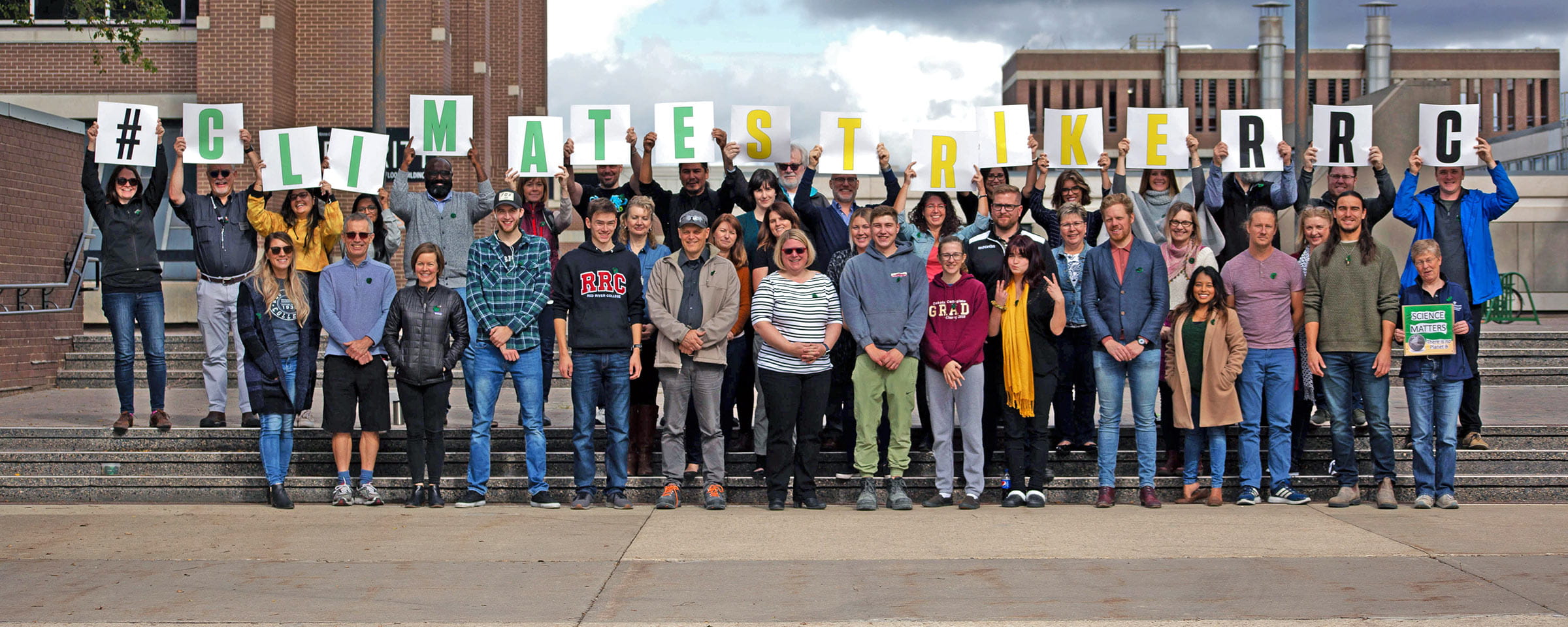Get Inspired – RRC Commuter Profiles Part 2
The Commuter Challenge is winding down but our commitment to helping you green your commute is ongoing. Whether you participated in the Commuter Challenge or not this year (you can still register until Friday, June 16) we are here to continue to support and inspire you to choose sustainable transportation whenever possible. One way we can do this is by sharing the stories of your fellow RRC colleagues who are a wealth of experience and inspiration and happy to share it! Below is part 2 of our RRC Commuter Profiles to help get you inspired – click here for Part 1.
If you would like to share your own sustainable commuting experience, please send us a note.

“The Debbie” with her dog.
What is your name? Debbie Donato (aka The Debbie)
Which campus do you work out of? Both NDC and EDC
How do you typically commute to work?
Carpool (2 people)
How far is your commute one way? 3.7 km/4.5 km
What do you like about your commute?
With proper attire and planning, it is short enough to walk.
What tips/suggestions do you have for someone thinking about changing to a more sustainable commute? Build it into your routine, instead of looking at it as an option. If sustainable commute = time consuming, pair your commute with another task if possible (like drafting your Cheers for Peers messages J).
 What is your name? Chris Harrington
What is your name? Chris Harrington
Which campus do you work out of? NDC
How do you typically commute to work? Bicycle
How far is your commute one way? 7.5 km
What do you like about your commute?
Fresh air, exercise, minimal environmental impact, inexpensive, great way to start and end the work day
What tips/suggestions do you have for someone thinking about changing to a more sustainable commute? If you are thinking about bike commuting, talk to someone you know who does and obtain a good safe route. There a lots of good routes available to every corner of the city. There is no need to ride on busy, dangerous streets. Be safe and be visible. Wear a helmet and bright clothing. Use lights when it’s cloudy or dark. Have a bell. Obey the rules of the road. Then, get out there and give it a try. You’ll be amazed at how it will improve your day.

Matthew Brett
What is your name? Matthew Brett
Which campus do you work out of? NDC and the new ACE Project Space on McDermot.
How do you typically commute to work?
I either bus or bike.
How far is your commute one way?
My bike ride to NDC varies between 8 and 9.5km depending on the route and takes just over 30 minutes at a leisurely pace.
What do you like about your commute?
Biking to work is a really pleasant way to start and finish the day, and I like that I’m contributing in a small and visible way to changing our transit infrastructure in the city.
What tips/suggestions do you have for someone thinking about changing to a more sustainable commute? Get an Eco-Pass and take the bus instead of driving if your life permits. You save lots of money and don’t have the stress of driving in traffic.
For cyclists, I’d have a few tips: First, have a cycling buddy or two. Biking is best when shared. I bike to and from work with a friend who works close to the College. Having someone to bike with is a lot like having a gym buddy. It helps insure that you’ll bike to work rather than bussing or driving. I feel safer on the road when there’s two of us. It also just makes the ride more pleasant because you have someone to share the ride with.
Second, have a pannier to store your schoolbag and work materials instead of having them on your back. This prevents having a sweaty back and makes the ride much more comfortable. I have two waterproof 20L Blackburn panniers (pictured).
Third, wear layers. Having a pannier allows you to wear layers and store them easily. Weather can be unpredictable in Winnipeg, so being able to easily put on, take off and store gloves or a windbreaker is a great help.
Fourth, have a small repair kit in your pannier at all times. I have a kit that fits in my hand, and it includes a tire pump, spare tires, tire patches, a simple wrench, glue and other basic repair essentials. Having a simple repair kit like this for city-cycling can save you from a frustrating walk.
Finally, have charged bike lights in your pannier at all times. I always have charged bike lights at my disposal, and they come in handy on evenings where you end up at work late or during those early spring and late fall evenings. I don’t always wear bright clothing but the lights certainly make me feel safer on the road, and they only cost a few bucks.
